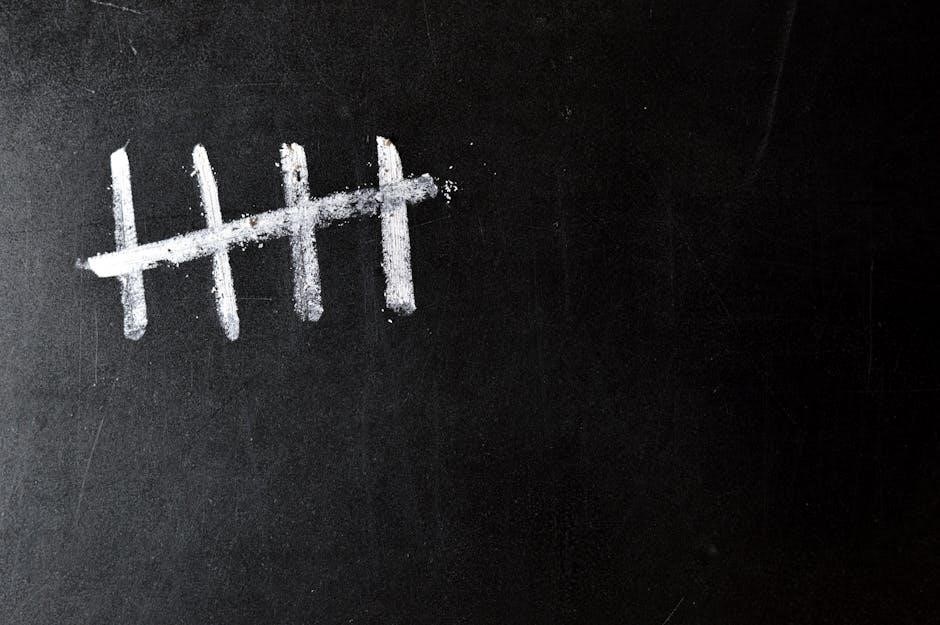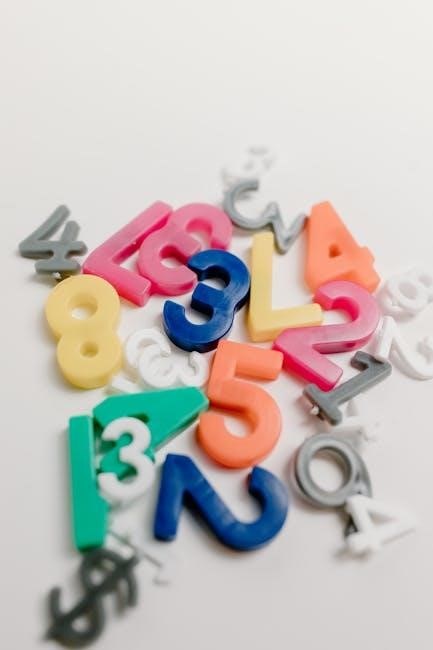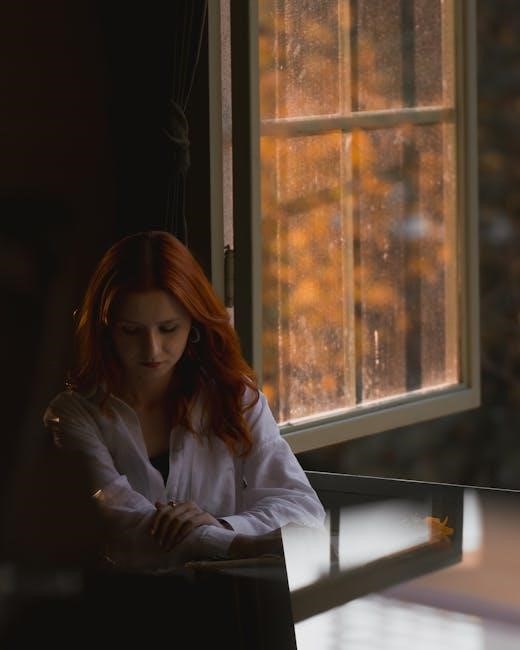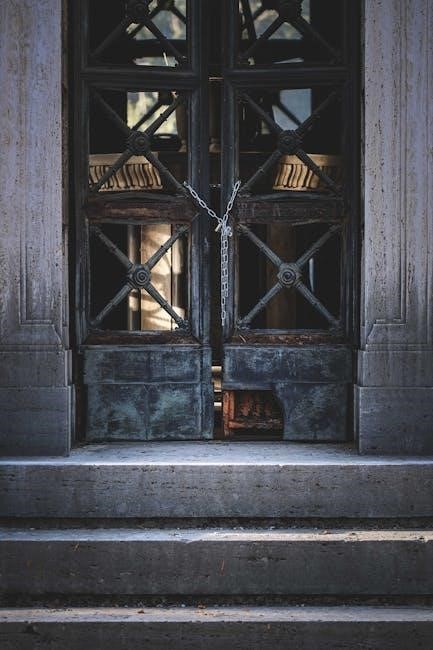Porter’s Five Forces: An Overview
Porter’s Five Forces is a strategic tool used to analyze an industry’s competitive intensity and attractiveness. It identifies five key forces that shape industry competition and profitability‚ providing insights for strategic decision-making and competitive positioning;

Understanding the Five Forces Model
The Five Forces model examines industry dynamics by assessing the threat of new entrants‚ supplier power‚ buyer power‚ substitute threats‚ and rivalry among competitors. Understanding these forces helps businesses develop effective competitive strategies for long-term success.
Definition and Purpose
Porter’s Five Forces is a framework for industry analysis and strategic planning. It examines the competitive intensity and attractiveness of an industry. The model identifies five key forces that influence industry profitability: the threat of new entrants‚ the bargaining power of suppliers‚ the bargaining power of buyers‚ the threat of substitute products or services‚ and the intensity of rivalry among existing competitors. By understanding these forces‚ businesses can assess their competitive position‚ identify opportunities and threats‚ and develop strategies to enhance their long-term profitability. The model helps companies make informed decisions about entering or exiting industries‚ positioning themselves effectively‚ and creating sustainable competitive advantages; Ultimately‚ the purpose of Porter’s Five Forces is to provide a structured approach for analyzing the competitive landscape and developing strategies that align with the industry dynamics.
Michael Porter and Harvard Business School
Michael E. Porter‚ a renowned professor at Harvard Business School‚ introduced the Five Forces framework in his 1979 article “How Competitive Forces Shape Strategy.” Porter’s work revolutionized the field of strategic management by providing a structured approach to analyzing industry competition. As a leading authority on competitive strategy‚ Porter has significantly influenced business theory and practice. His Five Forces model has become a cornerstone of strategic analysis‚ widely used by academics and practitioners alike. Harvard Business School has been instrumental in disseminating Porter’s ideas through its MBA programs‚ executive education courses‚ and research initiatives. The framework’s enduring popularity reflects its practical value in understanding industry dynamics and formulating effective competitive strategies. Porter’s ongoing research and teaching at Harvard Business School continue to shape the field of strategic management and provide valuable insights for businesses worldwide. The Five Forces framework is a testament to his lasting impact on the business world.
The Five Competitive Forces
Porter’s Five Forces include the threat of new entrants‚ bargaining power of suppliers‚ bargaining power of buyers‚ threat of substitute products‚ and rivalry among existing competitors‚ shaping industry profitability.
Threat of New Entrants
The threat of new entrants refers to the ease or difficulty with which new companies can enter an industry. High barriers to entry‚ such as significant capital requirements‚ strict regulations‚ or established brand loyalty‚ reduce the threat. When entry is easy‚ competition intensifies‚ potentially driving down prices and reducing profitability for existing firms.
Conversely‚ when barriers are high‚ established companies can maintain their market share and profitability more easily. Understanding these barriers and their impact is crucial for assessing the competitive landscape. Factors influencing barriers include economies of scale‚ product differentiation‚ and access to distribution channels.
Bargaining Power of Suppliers
The bargaining power of suppliers assesses their ability to influence prices and terms within an industry. Suppliers have high bargaining power when there are few substitutes for their products‚ or when they supply critical components. This power allows them to charge higher prices‚ reduce quality‚ or limit availability‚ impacting the profitability of businesses.
Conversely‚ when there are many suppliers or when businesses can easily switch suppliers‚ the suppliers’ bargaining power decreases. Analyzing factors such as supplier concentration‚ switching costs‚ and the importance of suppliers’ inputs to the businesses’ products helps determine the extent of their influence.
Bargaining Power of Buyers
The bargaining power of buyers‚ or customers‚ refers to the ability of customers to influence the prices and terms of sale. High buyer power exists when buyers are concentrated‚ purchase in large volumes‚ or when there are many alternative suppliers. In these situations‚ buyers can demand lower prices‚ higher quality‚ or additional services‚ impacting profitability.
Conversely‚ when buyers are fragmented‚ purchase in small quantities‚ or have limited alternative suppliers‚ their bargaining power is weaker. Evaluating factors such as buyer concentration‚ switching costs‚ and the importance of the product or service to the buyer’s business helps determine the extent of buyer influence.
Threat of Substitute Products
The threat of substitute products refers to the availability of alternative products or services that can satisfy the same customer need. When many substitutes exist‚ customers have more options‚ increasing price sensitivity and limiting profitability. The threat is high when substitutes offer attractive price-performance trade-offs or are readily available.
Companies must differentiate their offerings through quality‚ features‚ or branding to mitigate this threat. Low switching costs for buyers also increase the threat of substitutes‚ as customers can easily switch to alternatives. Analyzing the price and performance of substitutes‚ along with buyer switching costs‚ helps assess the potential impact on industry profitability and competitive dynamics.
Rivalry Among Existing Competitors
Rivalry among existing competitors describes the intensity of competition between companies already operating in the industry. High rivalry can lead to price wars‚ increased advertising‚ and new product introductions‚ squeezing profit margins. Several factors influence the intensity of rivalry‚ including the number and size of competitors‚ industry growth rate‚ product differentiation‚ and exit barriers.
High fixed costs and low switching costs can also intensify rivalry. When rivalry is intense‚ companies must focus on strategies to differentiate themselves‚ improve efficiency‚ and build customer loyalty. Understanding the drivers of rivalry helps businesses anticipate competitive moves and develop effective strategies to maintain profitability.

Applying Porter’s Five Forces
Applying Porter’s Five Forces helps businesses analyze industry attractiveness and develop effective competitive strategies. This framework guides decision-making‚ identifies opportunities‚ and mitigates threats for enhanced profitability and market positioning.
Analyzing Industry Attractiveness
Analyzing industry attractiveness using Porter’s Five Forces involves assessing the intensity of each force to determine the overall profitability potential. A highly attractive industry typically has weak supplier and buyer power‚ low threat of new entrants and substitutes‚ and moderate rivalry. This analysis helps companies understand the competitive landscape and identify opportunities for sustainable profits. By evaluating these factors‚ businesses can strategically position themselves to capitalize on industry dynamics. It’s about understanding the profitability of firms already in the industry‚ along with barriers to entry‚ buyer power‚ supplier power‚ and the threat from substitutes in order to make informed decisions.
Developing Competitive Strategies
Developing competitive strategies based on Porter’s Five Forces involves leveraging insights from the analysis to create a sustainable competitive advantage. This can include strategies to mitigate threats from new entrants or substitutes‚ manage supplier and buyer power‚ or differentiate from rivals. Businesses can also identify underserved segments or niche markets where competition is less intense. Effective strategies exploit industry characteristics‚ enabling companies to outperform competitors and achieve long-term profitability. The framework empowers businesses to dissect their industry structure to formulate enduring business strategies‚ helping them to navigate threats‚ and craft differentiated positions within the market.

Benefits of Using Porter’s Five Forces
Porter’s Five Forces framework offers several key benefits for businesses. Firstly‚ it provides a structured approach to analyzing industry dynamics‚ helping companies understand the competitive landscape. Secondly‚ it enables businesses to identify potential threats and opportunities‚ informing strategic decision-making. Thirdly‚ it facilitates the development of effective competitive strategies by highlighting areas where a company can gain an advantage. Fourthly‚ it supports resource allocation decisions‚ ensuring that investments are aligned with the most promising opportunities. Finally‚ it enhances a company’s ability to adapt to changing industry conditions‚ fostering long-term success and profitability. Ultimately‚ this model helps understand various dynamics affecting the markets potential profitability and competitive intensity.

Limitations of Porter’s Five Forces
While Porter’s Five Forces is a valuable tool‚ it has limitations. It offers a static snapshot of an industry and may not capture rapidly evolving dynamics. The model assumes clear industry boundaries‚ which can be blurred in reality. It may oversimplify complex competitive interactions and overlook the role of innovation. The framework focuses primarily on external forces and gives less attention to internal capabilities. Additionally‚ the model may not adequately address the impact of government regulations or macroeconomic factors. Furthermore‚ the model downplays the potential for collaboration and cooperation among competitors. Despite these limitations‚ Porter’s Five Forces remains a useful starting point for industry analysis when complemented with other strategic tools.













































